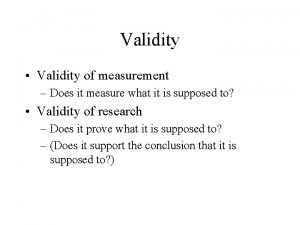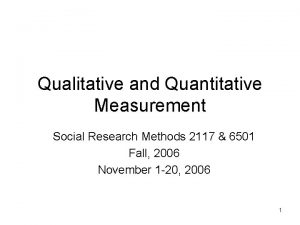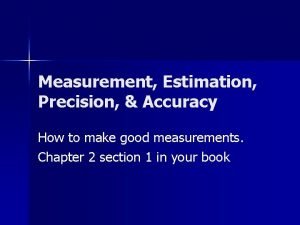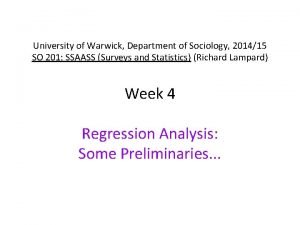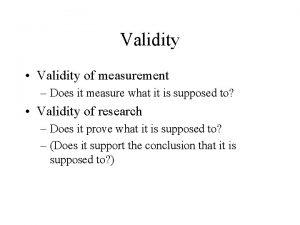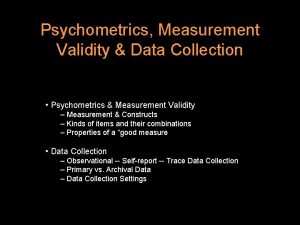Validity Validity of measurement Does it measure what








- Slides: 8

Validity • Validity of measurement – Does it measure what it is supposed to? • Validity of research – Does it prove what it is supposed to? – (Does it support the conclusion that it is supposed to? )

Validity of Research • Internal Validity • Does the IV (and not some other factor) really cause the changes in the DV? • Ruling out other causes (confounds) • Construct Validity • Does the study support theory it is supposed to and no other theories? • Ruling out other theories (alternative explanations) • External Validity • Do the results generalize to other people? • Statistical Validity • Does the IV cause the changes in the DV, or could they be due to chance?

The two kinds of Construct Validity • Construct validity of measures – Does it measure what it is supposed to and nothing else? • Construct validity of research – Does it support theory it is supposed to and no other theories?

Threats to Validity • • Internal Validity: Confounds Construct Validity: Ambiguity External Validity: Uniqueness Statistical Validity: Insufficient Power* * and improper use of statistical techniques

Threats to Internal Validity: Confounds • • • History Maturation Testing effects (e. g. : practice effects) Selection bias (in assigning to conditions) Mortality Regression to the mean

Threats to Construct Validity: Ambiguity • Loose connection between theory and method (poor operational definition of theoretical concepts) • Ambiguous effects of IVs – If participants interpret the instructions differently than intended – “Good subject” effects – Evaluation apprehension

Threats to External Validity: Uniqueness • • External validity = generalizability Non-representative samples Changes over time “Ecological validity” – does the result transfer to the real world from the laboratory? • The more unique the experimental situation and the sample, the less generalizable the results are likely to be

Threats to Statistical Validity: Insufficient Power • Too small a sample size makes it harder to tell whether an effect is due to chance or not • Other threats besides low power: There are many ways that the improper use of statistical techniques can lead to invalid conclusions.

